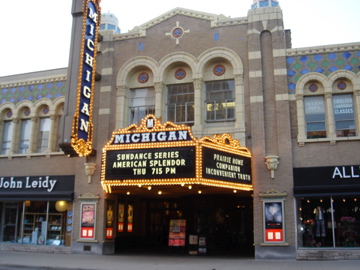I wrote the following article, which ran in Indiewire on July 1st. Here it is in its entirety, with a couple of added points at the end…

As a believer and crusader for the theatrical experience, the closure of movie theaters all over the world was a punch in the gut. There was an immediate consensus among pundits of all stripes that this was the end of theatrical moviegoing. People would just get used to the idea that they could see what they want at home, so why would they ever go out to see a movie again?
Yet in the art films world, a remarkable thing happened: Several independent distributors created something called “virtual cinema.” Pioneered by Kino Lorber, Magnolia, Oscilloscope, and others, they made their stranded films available, online, in partnership with the independent theaters where the films were scheduled to play. Theaters used their patron lists to market the films; in return, they took a percentage of the gross as if they had presented the films in their physical theaters. Continue reading “How Virtual Cinema Could Help Arthouses Secure Their Future in 7 Easy Steps”


 There has been a lot of discussion recently among the mission-driven, independent art houses in the U.S. regarding the transition to digital. The art houses are stuck between a rock and a hard place due to the cost of DCI compliant (studio approved) equipment that would be necessary to show such cash cows as “Black Swan” or “The King’s Speech” — equipment that the art houses simply can’t afford — while the vast majority of the real indie movies that they play are not available in that format. Further angst is caused by the sense that it is only a matter of a few years before there simply are no more 35mm prints available. In the midst of a lot of doom and gloom, Russ Collins, the Executive Director of the Michigan Theater in Ann Arbor and a leader of the Art House Convergence wrote the following guest blog…
There has been a lot of discussion recently among the mission-driven, independent art houses in the U.S. regarding the transition to digital. The art houses are stuck between a rock and a hard place due to the cost of DCI compliant (studio approved) equipment that would be necessary to show such cash cows as “Black Swan” or “The King’s Speech” — equipment that the art houses simply can’t afford — while the vast majority of the real indie movies that they play are not available in that format. Further angst is caused by the sense that it is only a matter of a few years before there simply are no more 35mm prints available. In the midst of a lot of doom and gloom, Russ Collins, the Executive Director of the Michigan Theater in Ann Arbor and a leader of the Art House Convergence wrote the following guest blog…